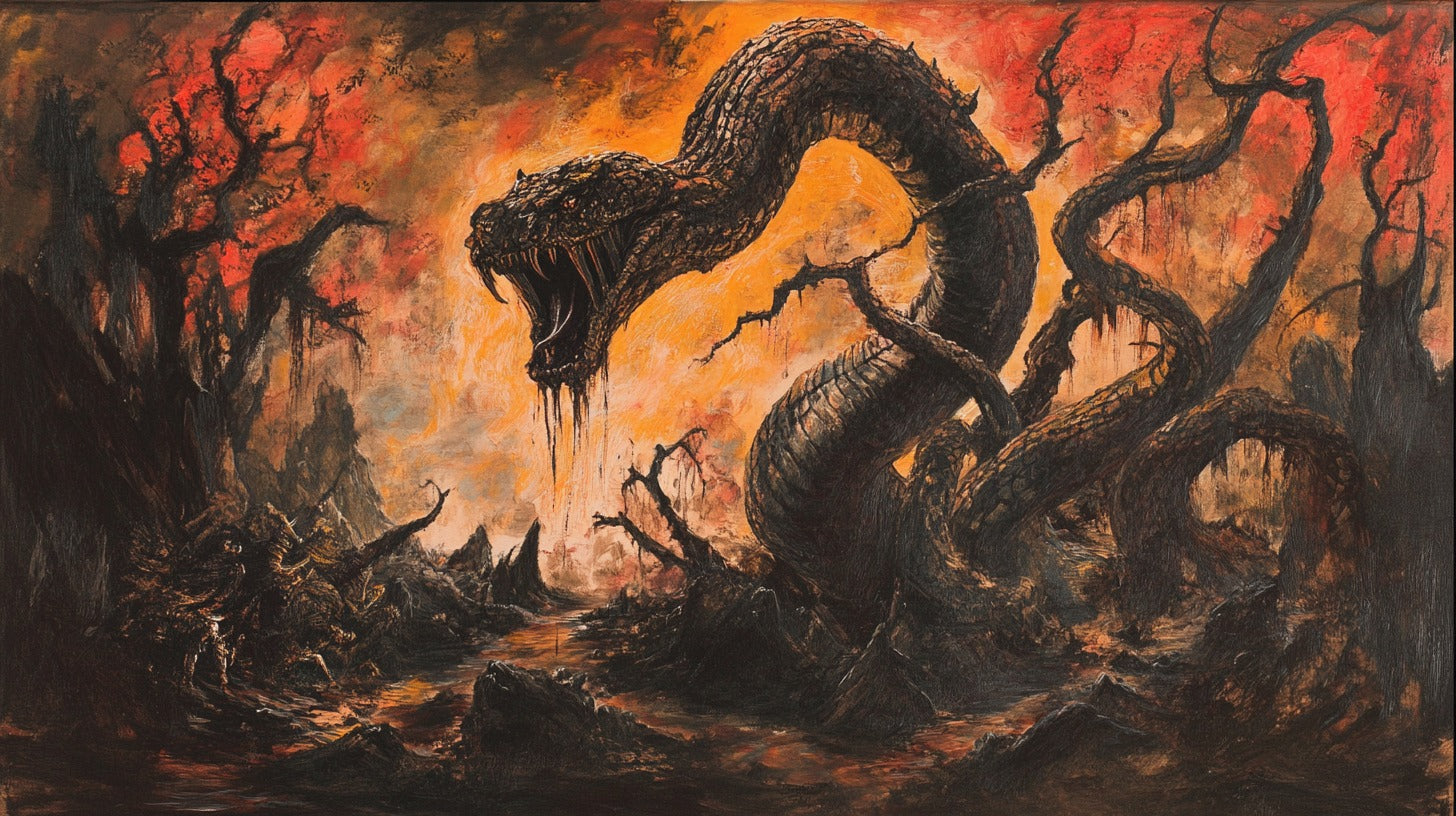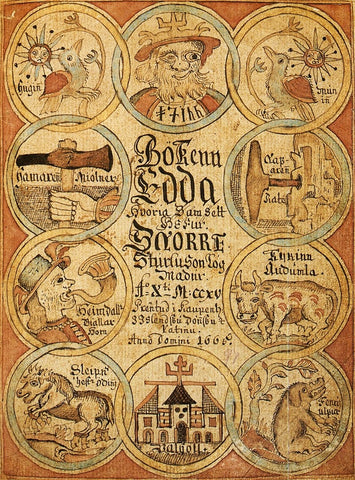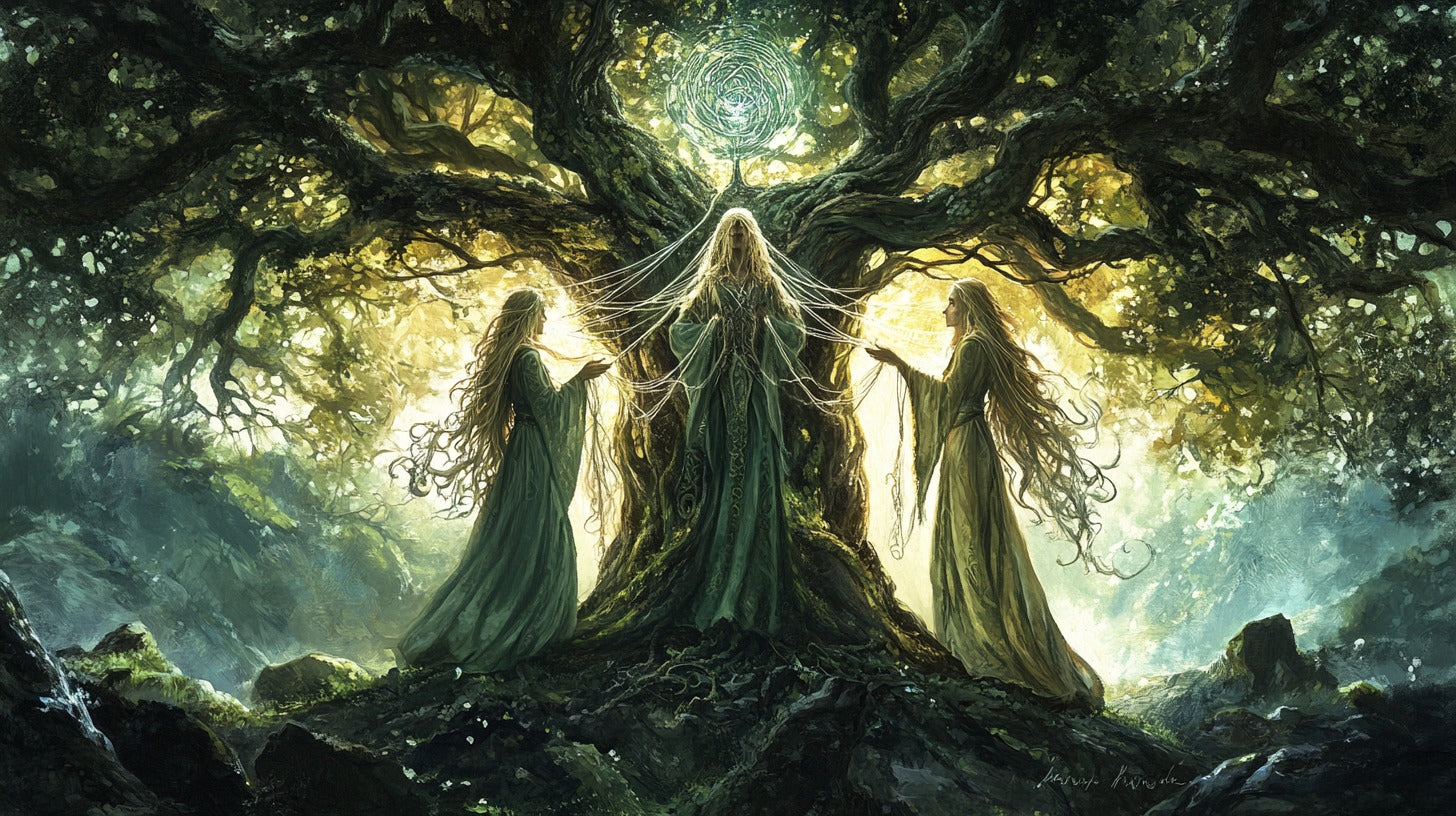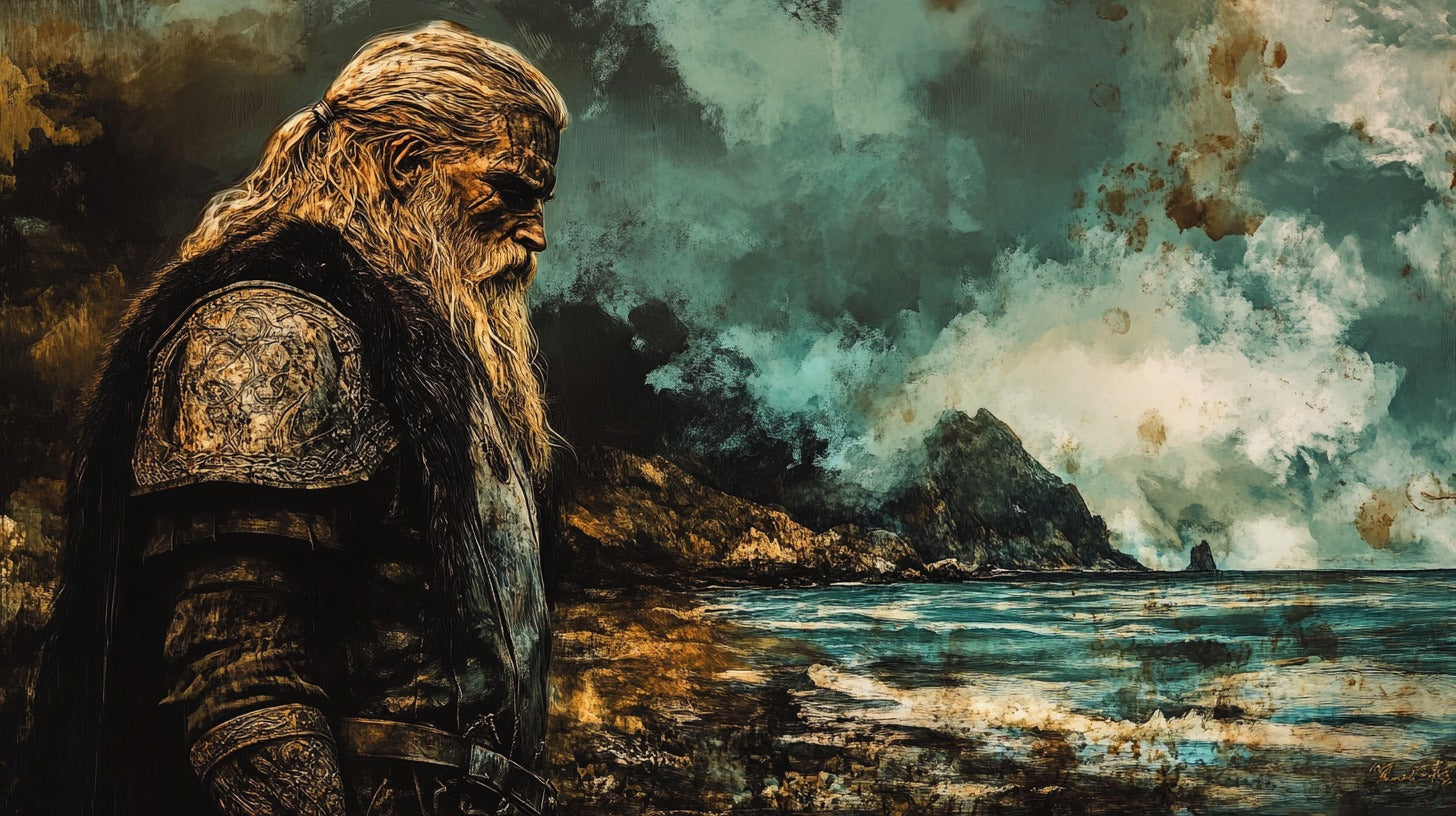
Níðhöggr: Chaos Incarnate in Norse Mythology
Níðhöggr, also spelled Nidhogg or Nidhöggr, is a powerful and enigmatic figure in Norse mythology. This cosmic serpent plays a crucial role in the Norse understanding of the universe, embodying destruction and chaos. As a creature that gnaws at the roots of Yggdrasil, the world tree, Níðhöggr represents a constant threat to the cosmic order and is intricately linked to the Norse concept of fate and the end of the world.
Origins and Etymology

Norse Mythology
Níðhöggr emerges from the rich tapestry of Norse mythology, a belief system that originated among the Nordic peoples of Scandinavia during the Viking Age (793-1066 CE). This mythological framework, preserved in various Old Norse texts, provides a complex cosmology in which Níðhöggr plays a significant role.
Linguistic Analysis
The name Níðhöggr is Old Norse, composed of two elements: "níð," meaning malice or curse, and "höggr," meaning striker or hewer. Thus, the name can be interpreted as "curse-striker" or "malice-striker." This etymology offers insight into the perceived nature and function of the creature within Norse mythology.
Níðhöggr in Norse Cosmology

The Malice Striker - Rotating Pendant
Yggdrasil: The World Tree
To understand Níðhöggr's significance, one must first comprehend the concept of Yggdrasil. In Norse cosmology, Yggdrasil is an immense ash tree that connects and sustains the Nine Worlds. This cosmic tree serves as the axis mundi, the center of the universe around which all realms are organized.
Níðhöggr's Role and Habitat
Níðhöggr resides at the base of Yggdrasil, in the realm of Niflheim, the world of primordial ice and mist. The serpent's primary activity is gnawing at the roots of the world tree, an action that threatens the stability of the cosmos. This perpetual assault on Yggdrasil's foundations represents the constant struggle between order and chaos in the Norse worldview.
According to the Poetic Edda, Níðhöggr not only attacks Yggdrasil but also feeds on the corpses of the dead in Náströnd, a shore in Hel where oathbreakers and other criminals are punished. This dual role as both a cosmic threat and an agent of posthumous punishment underscores Níðhöggr's complex nature in Norse mythology.
Literary References

Poetic Edda
The Poetic Edda, a collection of Old Norse poems preserved in the 13th-century Icelandic manuscript Codex Regius, provides several references to Níðhöggr. In the poem "Völuspá" (The Prophecy of the Seeress), Níðhöggr is mentioned in the context of Ragnarök, the Norse apocalypse:
"There comes the dark dragon flying,
Glittering serpent from Nida Fells;
He bears in his pinions as the plains he o'erflies,
Nidhogg, corpses."
This passage suggests that Níðhöggr plays a role in the final destruction of the world, carrying corpses in its wings as it flies over the battlefield.
Prose Edda
Snorri Sturluson's Prose Edda, written in the 13th century, offers additional details about Níðhöggr. In the section known as Gylfaginning, Snorri describes the serpent's habitat and activities:
"A serpent gnaws from beneath on the root [of Yggdrasil]... The serpent is called Níðhöggr."
This description reinforces Níðhöggr's role as a threat to the cosmic order, constantly undermining the stability of Yggdrasil.
Other Old Norse Sources
While the Poetic Edda and Prose Edda are the primary sources for information about Níðhöggr, the serpent is also mentioned in other Old Norse texts. These references, though often brief, contribute to our understanding of Níðhöggr's place in Norse mythology and its significance in the broader cultural context of medieval Scandinavia.
Symbolism and Interpretation

Byzantine King Chain Serpent Head Bracelet
Destroyer of the Cosmos
Níðhöggr's relentless gnawing at the roots of Yggdrasil symbolizes the forces of destruction and chaos that constantly threaten the order of the universe. This ongoing assault on the world tree represents the cyclical nature of creation and destruction in Norse cosmology, where even the cosmic order is subject to eventual decline and renewal.
Níðhöggr and the Concept of Evil
In Norse mythology, the concept of evil is not as clearly defined as in some other religious traditions. Níðhöggr, while destructive and associated with death and punishment, is not necessarily portrayed as an embodiment of pure evil. Instead, the serpent can be seen as a necessary counterbalance to the forces of creation and order, representing the inevitable entropy that affects all things.
Connections to Other Mythological Serpents
Níðhöggr shares similarities with other mythological serpents from various cultures. Comparisons can be drawn to creatures such as the Greek Python, the Mesopotamian Tiamat, and the biblical Leviathan. These parallels suggest a common Indo-European or even broader mythological motif of serpentine creatures associated with chaos and cosmic threats.
Cultural Impact

Medieval Scandinavian Art
Representations of Níðhöggr in medieval Scandinavian art are relatively rare, possibly due to the abstract nature of the creature and its cosmic role. However, some artifacts, such as runestones and wood carvings, feature serpentine creatures that may be interpreted as depictions of Níðhöggr or related mythological beings.
Modern Representations
In contemporary culture, Níðhöggr has experienced a resurgence of interest, particularly in literature, art, and popular media inspired by Norse mythology. The serpent appears in various forms in fantasy novels, comic books, and video games, often retaining its association with destruction and cosmic threats.
Scholarly Debates
Historical Accuracy and Interpretation
Scholars continue to debate the precise nature and significance of Níðhöggr in Norse mythology. Some argue that the creature's role may have been emphasized or altered in the surviving texts, which were largely recorded in the Christian era. The extent to which these sources accurately reflect pre-Christian beliefs remains a subject of ongoing research and discussion.
Comparative Mythology
Comparative mythologists have explored the connections between Níðhöggr and similar figures in other mythological traditions. These studies aim to uncover potential shared origins or cultural exchanges that may have influenced the development of these mythical serpents across different cultures.
Conclusion
Níðhöggr stands as a powerful symbol of destruction and cosmic threat in Norse mythology. This serpentine creature, gnawing at the roots of Yggdrasil and feeding on the corpses of the dead, embodies the constant struggle between order and chaos in the Norse worldview. While much about Níðhöggr remains shrouded in mystery due to the limited nature of surviving sources, its significance in Norse cosmology and its enduring impact on cultural imagination are undeniable. As scholars continue to analyze and interpret the available evidence, Níðhöggr remains a fascinating subject of study, offering insights into the complex beliefs and symbols that shaped Norse mythology and, by extension, medieval Scandinavian culture.
FAQs
- What is Níðhöggr's primary role in Norse mythology?
Níðhöggr's primary role is gnawing at the roots of Yggdrasil, the world tree, representing a constant threat to the cosmic order.
- How is Níðhöggr related to Ragnarök?
In some sources, Níðhöggr is mentioned as playing a role in Ragnarök, flying over the battlefield carrying corpses, suggesting its involvement in the final destruction of the world.
- Are there any physical descriptions of Níðhöggr in Norse texts?
Detailed physical descriptions of Níðhöggr are scarce in Norse texts. It is generally described as a serpent or dragon, but specific features are not consistently outlined.
- How does Níðhöggr compare to dragons in other mythologies?
Níðhöggr shares similarities with other mythological serpents or dragons, such as its destructive nature and cosmic significance, but its specific role in gnawing at the world tree is relatively unique.
- Is Níðhöggr considered evil in Norse mythology?
While destructive, Níðhöggr is not necessarily portrayed as purely evil. It represents a natural force of chaos and destruction, which is seen as a necessary counterbalance to creation and order in Norse cosmology.








